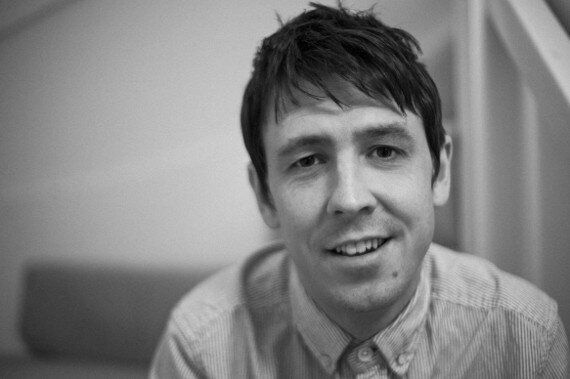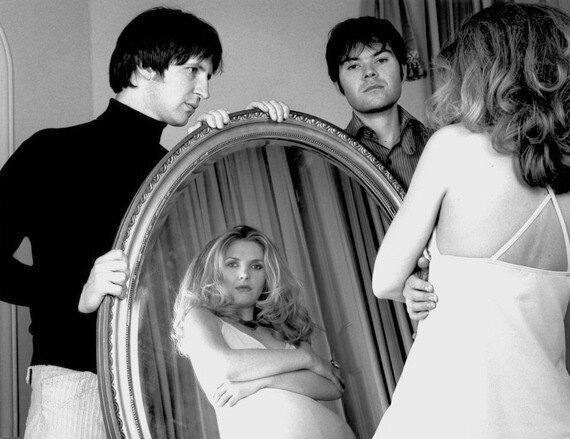The public has grown sick at heart. It has grown bored, and in growing bored, has itself become boring, today incapable of expressing any idealism owing to its new-found impotency, borne of the satiation of its sensual needs. Shagged out and brain dead, the public cannot be sold anything because it has already indulged in everything. It shows neither interest nor appetite for a cultural life. Its nervous system is shot. It lumbers on feet of clay. And musicians, those traders in sound, can only wait for it to once again awaken and listen with refreshed ears.

In the meantime, all artists must give free rein to their impulses. Art, after all, exists far from the world of commerce, the former making use of the latter only when a huckster sees fit to make a killing, and cutting a record isn't enough these days. To have it heard a musician must tie it to other artistic mediums to maximise exposure.
Take a band like Stone Foundation, the seven-piece Midlands-based outfit that trades in soul/funk and has made visual their songs by means of a savvier kind of filmmaker like Lee Cogswell (pictured above) who has been busy making a name for himself in the music and film worlds, much in the same way film-makers like Don Letts, Tim Pope and Julien Temple did in pop's heyday.
"The role of the documentary film-maker is to find a story," says Cogswell. "You hang out, get involved with interesting people and projects, point a camera and shoot as much as you can. Then, you edit, take the footage and tell a story. The story is the most important part."
Which is the only hook remaining: narrative, told in the form of song (think The Kinks, Dylan or Rodriguez) or in film. If these two media can be conjoined, a band then possesses a potent package. "I do what I do because I love film. I'm not trying to sell anything or jump on any bandwagons. The whole MTV culture seems to be full of people churning out proven to work, but not to last rubbish, just in order to be successful, or to sell or to shock. I just try to make good films about interesting subjects."
Cogswell is also busy expanding his remit, currently working in post-production with London-based author Mark Baxter on a documentary of the life and times of British jazz legend, Tubby Hayes. "I have a couple of short films I'm hoping to shoot later this year along with some music videos. You never know what's around the corner.
"Sometimes you've got to be ready to start filming the next interesting thing. I mean, I didn't plan to make Keep On Keepin' On," he says, a DVD which features Cogswell's coverage of underground soul legend Nolan Porter's collaboration with Stone Foundation, the short film To Find The Spirit starring Calum McNab (The Football Factory, Outside Bet) and a fly-on-the-wall film of the band's recent Japan tour.
Cogswell's style is of the guerrilla film-maker: restless, yet equally content to shoot with prosaic ease using the Canon 5D. It's cost-efficient film-making on the fly. "The more good work you put out there, the more people take note of what you're doing and some of them get behind you."
Cogswell is also currently shooting the behind-the-scenes footage for a forthcoming 'Making of...' documentary for the film Beverley which stars Vicky McClure (This Is England, Line Of Duty), Laya Lewis (Skins) and Winston Ellis (The Dark Knight). With film-makers like Cogswell able to cross-fertilise their talents over two distinct industries, such skills come to the aid of musicians who have for too long sought in vain the kind of exposure only a Zeiss lens can afford.

Another artistic hub is Saint Etienne, the pop outfit best known for an eclectic body of work inspired by Sixties popular culture, folk, electronica and house music and comprising Sarah Cracknell, Bob Stanley and Pete Wiggs (pictured above).
"The downloading culture has meant that artists have become quite faceless," says Sarah. "Who they are and what they stand for is no longer of any importance to the public. It's what it is. Call it progress."
But progress it isn't. Still-active bands from the 1980s and '90s are missing a trick by not making use of a wealth of young, talented film-makers who are themselves in dire need of cutting their teeth.
But Saint Etienne have taken the matter into their own hands. "We've made a film about 24 hours in the life of contemporary London," says Sarah of the band's latest bold step in the wake of its film collaboration with Paul Kelly, How We Used To Live, which was selected for premiere at the 2013 BFI London Film Festival and will be screened at the Sheffield Doc/Fest 2014 this month when Saint Etienne will provide a live soundtrack for the screening; something Sarah says will be "nerve-wracking".
Also on offer is a photographic monograph of over 150 images of Saint Etienne's history (First Third Books) comprising previously unseen images from the group's personal archives.
Diversification like this can only serve to increase a band's agileness and, consequently, its creativity. Of music's unhealthy revolution, Sarah says: "I saw it coming, but the big record companies buried their heads in the sand. They could have tied up a lot of loose ends that would have enabled artists to control the downloading of their music. But they failed."
But where the big labels have failed, bands must succeed and can only do so by utilising every artistic medium at their disposal. It's a matter of survival as a bitter wind continues to blow through this new England of dubious politicisation.
Photo 1: Yvonne Washington / photo 2: courtesy of Lee Puddefoot @ 9PR
